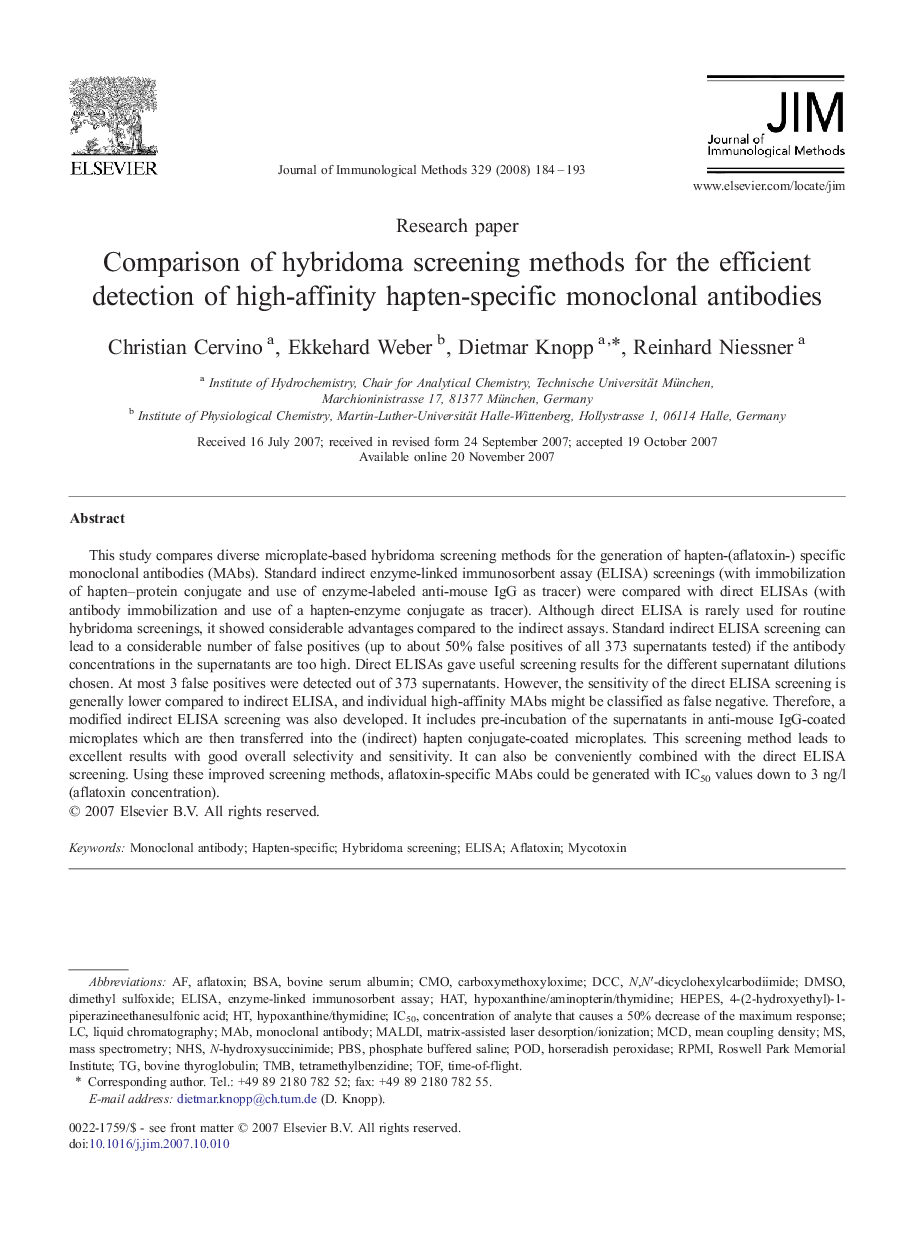| Article ID | Journal | Published Year | Pages | File Type |
|---|---|---|---|---|
| 8420187 | Journal of Immunological Methods | 2008 | 10 Pages |
Abstract
This study compares diverse microplate-based hybridoma screening methods for the generation of hapten-(aflatoxin-) specific monoclonal antibodies (MAbs). Standard indirect enzyme-linked immunosorbent assay (ELISA) screenings (with immobilization of hapten-protein conjugate and use of enzyme-labeled anti-mouse IgG as tracer) were compared with direct ELISAs (with antibody immobilization and use of a hapten-enzyme conjugate as tracer). Although direct ELISA is rarely used for routine hybridoma screenings, it showed considerable advantages compared to the indirect assays. Standard indirect ELISA screening can lead to a considerable number of false positives (up to about 50% false positives of all 373 supernatants tested) if the antibody concentrations in the supernatants are too high. Direct ELISAs gave useful screening results for the different supernatant dilutions chosen. At most 3 false positives were detected out of 373 supernatants. However, the sensitivity of the direct ELISA screening is generally lower compared to indirect ELISA, and individual high-affinity MAbs might be classified as false negative. Therefore, a modified indirect ELISA screening was also developed. It includes pre-incubation of the supernatants in anti-mouse IgG-coated microplates which are then transferred into the (indirect) hapten conjugate-coated microplates. This screening method leads to excellent results with good overall selectivity and sensitivity. It can also be conveniently combined with the direct ELISA screening. Using these improved screening methods, aflatoxin-specific MAbs could be generated with IC50 values down to 3Â ng/l (aflatoxin concentration).
Keywords
PODNHSRPMIIC50DCCTMBHEPESMCDmAbN-hydroxysuccinimidePBSCMOTOF4-(2-hydroxyethyl)-1-piperazineethanesulfonic acidBSADMSON,N′-dicyclohexylcarbodiimideAflatoxinbovine serum albuminMonoclonal antibodytetramethylbenzidineELISAEnzyme-linked immunosorbent assaybovine thyroglobulinmatrix-assisted laser desorption/ionizationDimethyl sulfoxideTime-of-Flight Mass spectrometryHybridoma screeningPhosphate buffered salineRoswell Park Memorial InstituteMALDIMycotoxinhypoxanthine/aminopterin/thymidineHorseradish peroxidaseliquid chromatographyHAT
Related Topics
Life Sciences
Biochemistry, Genetics and Molecular Biology
Biotechnology
Authors
Christian Cervino, Ekkehard Weber, Dietmar Knopp, Reinhard Niessner,
